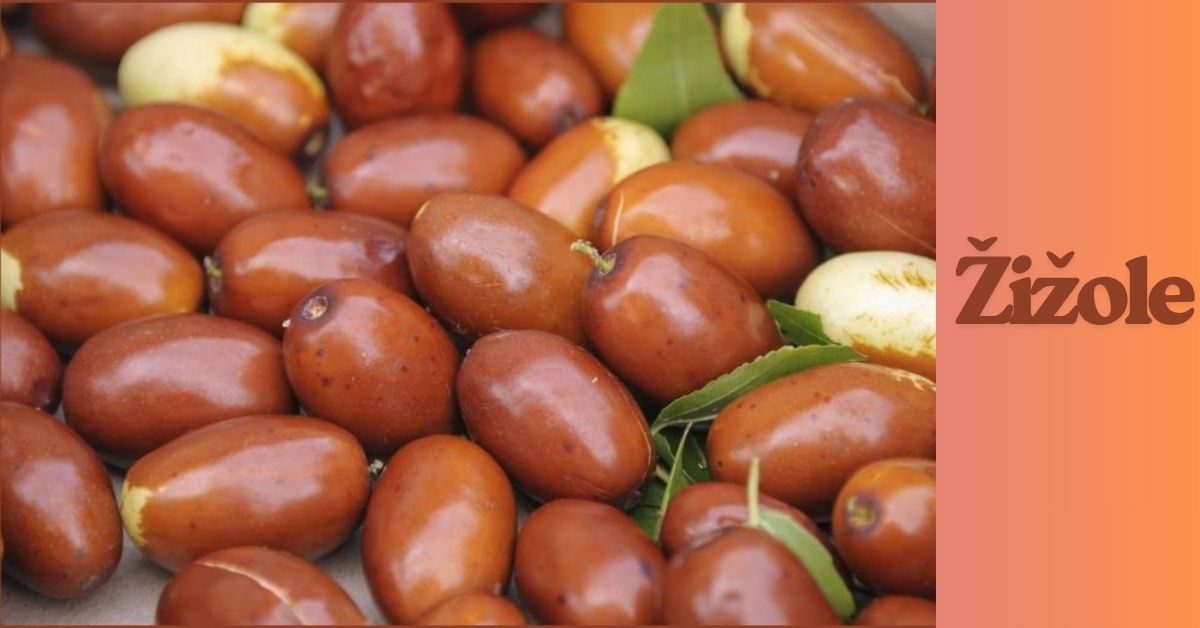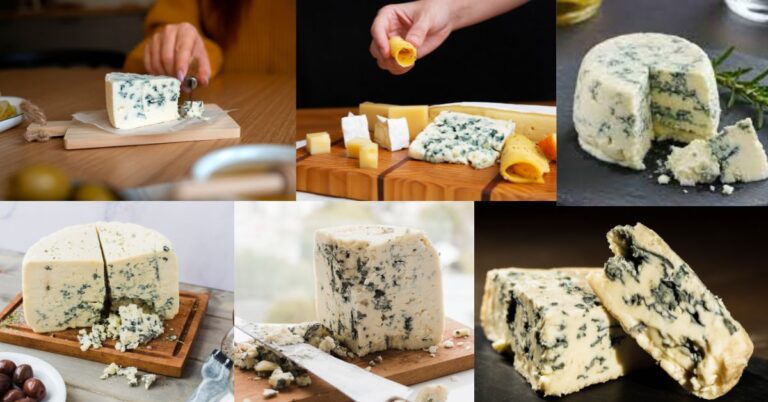Žižole: The Amazing Fruit You Should Know About

In a world full with fashionable fruits and superfoods, Žižole is a quiet little gem that merits much more attention. This unassuming fruit, sometimes called jujube or Chinese date, has been used for more than 4,000 years to subtly feed bodies and calm minds on all continents. Although they might not receive as much attention as berries, avocados, or bananas, Žižole are equally abundant in nutrients, flavour, and therapeutic potential.
A robust, sun-loving tree bears these little, apple-like fruits, which are delicious both fresh and dry. You will taste something crisp and slightly sweet, like a cross between an apple and a pear, when you bite into a fresh Žižole. The flavour intensifies when it dries; it’s still wonderfully healthy but sweet like candy. This fruit has gained recognition as a delicacy and a traditional treatment in both ancient Chinese medicine and Mediterranean cookery.
Everything about Žižole will be covered in this page, including their history, origins, culinary applications, health advantages, and growing advice. A natural, healthy, and surprisingly diverse fruit, Žižole may become your new favourite if you’re searching for a new fruit to enjoy.
What Are Žižole?
These fruits are tiny. Chinese dates or jujubes are other names for them. When they are fresh, they resemble little apples and grow on trees. They get wrinkled and brown like regular dates as they dry. When fresh, they taste somewhat like apples, but when dried, they taste extremely sweet, like candy. They can be consumed raw, dried, as tea, or cooked into cuisine.
The History and Origin of Žižole
It has existed for a very long period. More than 4,000 years ago, people in China began cultivating them. They were utilised as medicine back then to treat stress, gastrointestinal issues, and insomnia. Over time, traders introduced Žižole to a wide range of other nations, including Europe, Italy, Croatia, and Slovenia, as well as India and Iran. They are now enjoyed as food and medicine by people worldwide.
Different Names Across the World
It have many names because different countries call them different things:
- Jujube (English)
- Ziziphus jujuba (scientific name)
- Chinese date (in the West)
- Red date (in Asia)
- Žižole (in Italy, Slovenia, and Croatia)
- Ber (in India)
- Unab (in Arabic countries)
No matter what you call them, they are always tasty and healthy.
Botanical Characteristics
The Žižole tree is small and strong. It usually grows up to 5-10 meters tall. The tree has shiny green leaves and small yellow flowers. These flowers grow into fruits that start out green and turn red or brown when ripe. Inside the fruit is one hard seed, like the pit of a cherry.
Where Do Žižole Grow?
Žižole trees grow well in sunny places with dry soil. They originally came from China but now grow in many countries. You can find them in:
- China
- India
- Iran
- The Middle East
- Mediterranean countries (like Italy and Croatia)
- Southern parts of the USA (California, Arizona, Texas)
The tree doesn’t need a lot of water, which makes it perfect for dry, hot areas.
Types and Varieties
There are many types of it. Each type has its own size, taste, and texture. Here are a few common ones:
- Li: Big, sweet, and crunchy like an apple.
- Lang: Long and good for drying.
- Sherwood: Sweet and juicy.
- Honey Jar: Very sweet and small, great for fresh eating.
You can pick the type you like best!
Nutritional Profile
Vitamins and Minerals
Žižole are full of important nutrients, such as:
- Vitamin C (for your immune system and skin)
- B vitamins (for energy)
- Potassium (for your heart and muscles)
- Magnesium (for your nerves and muscles)
- Iron (for your blood)
- Calcium (for your bones)
Calories and Macronutrients
They are healthy and low in calories. In 100 grams of fresh Žižole, there are only about 79 calories. They have:
- Fiber (helps digestion)
- Natural sugars (gentle on blood sugar)
- Almost no fat
- A little protein
You can eat them without feeling guilty!
Health Benefits
Boosts Immune System
Because they have a lot of Vitamin C, it help your body fight colds, flu, and infections. Eating them can help keep you healthy.
Supports Digestive Health
Žižole have lots of fiber. Fiber helps your stomach work better, prevents constipation, and feeds the good bacteria in your gut.
Improves Sleep Quality
Many people eat dates to help them sleep. Some natural chemicals inside the fruit help you relax, feel calm, and sleep better.
Antioxidant Properties
It have antioxidants that protect your body from damage caused by harmful molecules (called free radicals). These antioxidants may help prevent heart disease, cancer, and other health problems.
Heart Health Support
The potassium and magnesium in Žižole are good for your heart. They help control your blood pressure and keep your heart beating normally.
How to Eat Žižole
Fresh Consumption
You can eat Žižole fresh like an apple. Just wash it and take a bite. They are crunchy, sweet, and refreshing.
Dried Žižole
When dried, their taste is like candy. You can eat them alone or mix them into trail mix or cereal.
In Teas and Infusions
In many countries, people put dried Žižole into tea. Just boil them in water for a few minutes to make a calming tea that can help you relax and sleep.
Cooking and Baking
You can also cook Žižole. They taste great in soups, stews, jams, and even cakes or cookies. They add natural sweetness to many recipes.
Žižole in Traditional Medicine
For thousands of years, people have used it as natural medicine. In Chinese medicine, they are believed to give energy, calm the mind, and help with stomach and sleep problems. Modern scientists are now starting to study these benefits and are finding that some of these traditional uses may really work.
How to Grow Žižole at Home
If you have a sunny garden, you can grow Žižole at home! Here’s what you need:
- Sun: The tree loves lots of sunlight.
- Soil: Well-drained soil is best.
- Water: Water regularly at first, but later it needs very little water.
- Pruning: Trim the tree once a year to help it grow better.
- Pests: It doesn’t get many diseases or bugs.
Even if you don’t have much space, you can grow some smaller types in a big pot.
Also Read: Shaun Sampson ICEXII: The Untold Story Behind a Bold Mission
Harvesting and Storing Žižole
It usually ripen in late summer or early fall. Pick them when they are fully colored and a little soft. Fresh zizole can stay in the fridge for 2-3 weeks. Dried Žižole can last for months if kept in a sealed container in a cool, dry place.
Possible Side Effects and Precautions
Most people can eat them without problems. But here are a few things to know:
- Some people might have allergies (rare).
- If you take sleeping pills or calming medicine, ask your doctor before eating zizole.
- People with diabetes should be careful because it have natural sugars.
Conclusion
Although Žižole isn’t a well-known fruit yet, you’ll see why it has been prized for thousands of years after tasting its sweetness and sensing its beneficial properties. From the ancient Chinese emperors to contemporary herbalists and chefs, Žižole has been used for comfort, balance, and natural healing in addition to nutrition.
The simplicity of enjoying Žižole is what makes them so unique. You can prepare them into delectable recipes, drink tea with them, eat them fresh, or snack on dried ones. They are the ideal option for anyone wishing to eat healthier, feel better, or try something new because they are low in calories, high in nutrients, and packed with fibre and antioxidants. Additionally, you may plant your own tree at home and reap the benefits year after year if the proper circumstances are met.
Therefore, Žižole are waiting for you if you’re prepared to venture beyond the typical fruits and discover something genuinely tried and adored around the world. This ancient fruit is sweet, nutritious, and rich in history. It is more than simply a snack; it is a tale, a custom, and a natural gift.
Don’t wait for it to become the next great thing in health. Begin your Ͻižole adventure now and savour the fruit that the world has forgotten.
FAQs
Are Žižole and dates the same?
No, they look a bit alike when dried, but they are different fruits from different trees.
Can I eat Žižole seeds?
No, the seeds are very hard. Only eat the soft fruit part.
Are good for weight loss?
Yes! They are low in calories, high in fiber, and help you feel full.
How long does a Žižole tree take to bear fruit?
Usually, you can get fruit after 3 to 4 years.
Can I grow Žižole in cold weather?
Some types can handle cold, but most grow best in warm, sunny places.





